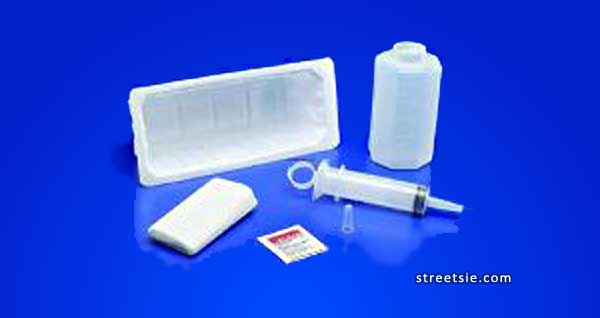Bladder Washout
A bladder washout is a technique used to flush blood clots or debris from the bladder by pushing water solution into the bladder and immediately draining.
Who Requires a Bladder Washout
You may need a bladder washout if:
- You have a lot of sediment in your urine
- You are unsure if your catheter is draining correctly
- Your catheter has blocked and you have no replacemnent
- You have been advised by your doctor or community nurse to do bladder washouts in the treatment of a specific urinary tract infection
Advantages of a Bladder Washout
- If you are unable to drink large amounts of fluids to treat a urinary tract infection or heavy sediment this may be an alternative method
- If your catheter repeatedly blocks off and you are unwilling or unable to do frequent catheter changes
- Stretching the bladder frequently can help avoid shrinkage
Disadvantages of a Bladder Washout
- Every time you disconnect a catheter from drainage bag you create an entry point for infection
- You are introducing foreign fluid into your bladder
- The procedure is time consuming
- If not done carefully it can cause bleeding and blood clots
- There is risk of damage to the epithelial lining of the bladder
- Studies have shown it has little or no effect on most infections
- Bladder washouts may induce autonomic dysreflexia in quadriplegics
Bladder Washout Equipment
- 60ml plastic syringe
- 2 clean plastic trays (ice cream containers or similar)
- 500mls of sterile bottled water or treated tap water boiled and cooled to room temperature (not* bore water tank water or chlorhexidine)
- Small supply of cotton wool balls
- Alcohol wipes (or small amount of methylated spirits or sterilizer for swabbing the catheter connections only)
- Clean bench area

Bladder Washout Procedure
If you experience pain at any time during the bladder washout procedure you should cease immediately and call a doctor or paramedic!
- Select a clean area where the procedure is to be carried out. (We suggest a bench area in the bathroom with a clean towel over the top of it).
- This procedure can either be carried out by the patient or their carer – the instructions are the same for both.
- Take the 500mls of prepared water and place within reach on the bench. Ensure the second container is alongside the first as this will be used for the used irrigation fluid and urine that is ‘washed out’ of the bladder during the procedure.
- Place the clean 60ml syringe alongside the containers on the prepared area. This is used to insert the water into the bladder.
- Place the cotton balls beside the container and have the methylated spirits within reach.
- Ensure the connection between the catheter and the drainage bag is exposed so you can get to it easily.
- Wash your hands thoroughly.
- Take a cotton ball soaked with methylated spirits and wipe the connection thoroughly. Dispose of the cotton ball.
- Carefully take the connection apart and rest the catheter end in the empty container.
- Fill the syringe with 60mls of water from the water container. Insert the syringe into the end of the catheter and gently insert the water by pressing on the plunger of the syringe. Do not withdraw any fluid through the catheter at this stage.
- Remove the syringe being careful to put the open catheter end into the empty container. You will notice that some of the urine/water will drain into the container.
- Fill the syringe again with 60mls of water and insert into the bladder. Once the syringe is completely empty withdraw 40mls of the mixture of urine/water into the syringe then discard into the drainage container. Again you will notice there is drainage of urine/water from the catheter into the drainage container.
- Repeat step 12 until all 500mls of water has been used.
- On completion take another cotton wool ball soaked with methylated spirits and wipe the catheter connection again before reconnecting to the drainage bag.
- Discard urine/water into the toilet and using a small amount of disinfectant clean out the container.
- Both containers should be kept covered and scalded out once a week with boiling water.
Care of Bladder Washout Equipment
You will need to make fresh milton solution each time you sterilise your bladder washout equipment before and after each procedure by doing the following;
- Into your clean water container place 500mls of tap water and either ¼ milton tablet or 7mls of milton solution (you can use vinegar and clean water at a 1:10 ratio or gently boil the equipment for 5 minutes)
- Once the solution has mixed place syringe with plunger removed from main barrel into this solution
- Leave the syringe to soak in the solution for one hour
- After one hour remove syringe and discard milton solution from container
- Using a clean towel or disposable paper towel dry container and syringe and store syringe in sealed container
Resources
- The Spinal Injuries Unit: Phone (07) 3240 2215 or (07) 3240 2641
- The SIU Consultant on Call Through PAH switchboard (after hours)
- Queensland Spinal Cord Injuries Service: www.health.qld.gov.au/qscis
I been wore supra pubic catheter almost 2 years I felt fully recovery I drank water and diet cranberry juice. my kidney renal were normal!! I am done well!